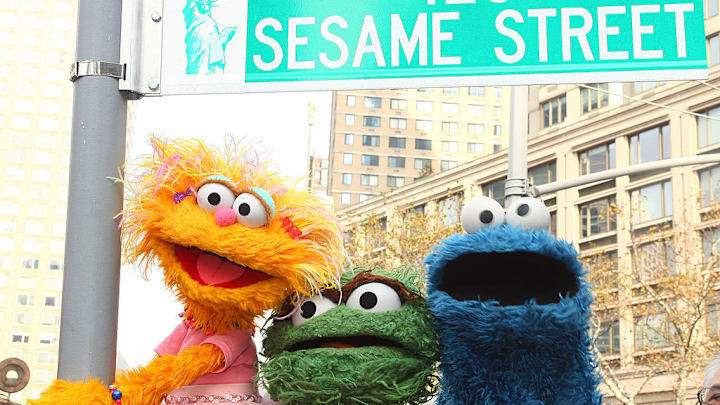Sesame Street has entertained and educated young viewers for more than 50 years. While Elmo, Big Bird, and the rest of the gang loom large in countless children’s lives, the performers who bring the characters to life are often overlooked.
In the WIRED video below from 2017, Matt Vogel (Big Bird), Ryan Dillon (Elmo), Martin Robinson (Mr. Snuffleupagus), Leslie Carrara-Rudolph (Abby Cadabby), and Frankie Cordero (Rudy) explain the work that goes into operating your favorite Muppets. According to the puppeteers, Sesame Street has three types of puppets with different mechanics: hand-and-rod, live hand, and full-body. Hand-and-rod puppets, like Elmo and Abby Cadabby, are the most common in the show. Puppeteers stick their hand into the Muppet’s head to make it talk while the other hand moves the attached metal rods to simulate arm movements.
To animate live hand puppets like Cookie Monster and Ernie, puppeteers insert their hands into gloves where the character’s hands are. It’s easy for these types of Muppets to grab items because the person controlling them can use their own hands. Other Muppets have more trouble interacting with objects because their fingers aren’t moveable.
Full-body Muppets, including Big Bird and Mr. Snuffleupagus, are arguably the most difficult to maneuver. Operating an 8-foot, walking, talking bird is no joke; while wearing the yellow suit, Matt Vogel stretches his right arm above his head to move Big Bird’s mouth and uses his left arm to move the left wing. The left limb also controls the right arm’s movements because the two sides are connected with a string. This makes gestures look natural; as one arm moves up, the other lowers.
Most Sesame Street puppeteers don’t take full ownership of a character on day one. New performers typically start as apprentices who focus on moving the puppets’ right hand alongside veteran cast members. Novices may fill this right-hand-man role for years before graduating to more involved character work. Even when that time comes, they can take years to feel comfortable in their character’s skin (or fur). Luckily, it’s not uncommon for Sesame Street cast members to stick around for decades, which is more than enough time to get accustomed to their roles.
Read More About TV Shows:
